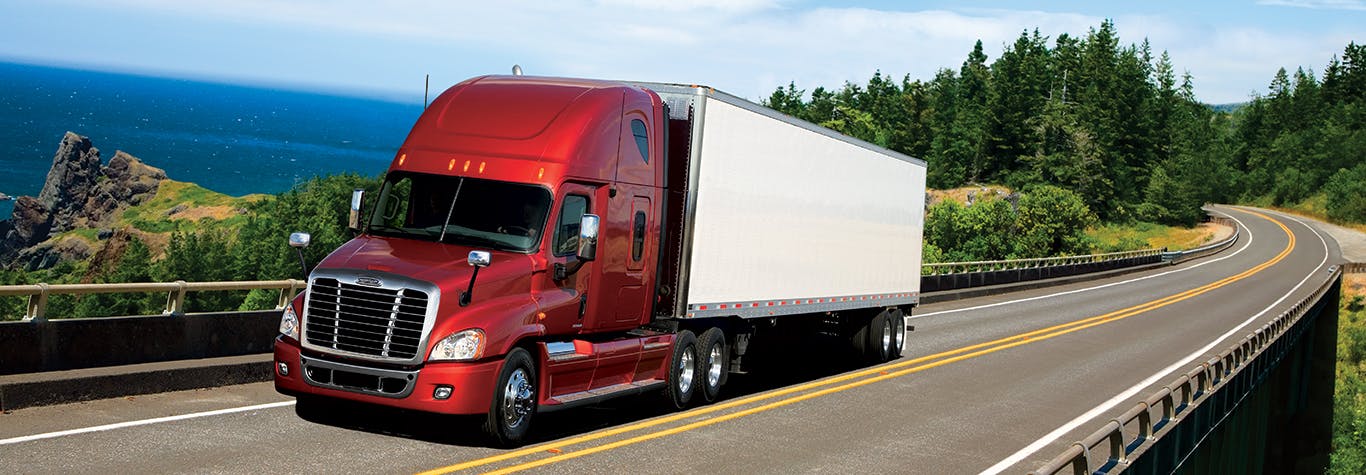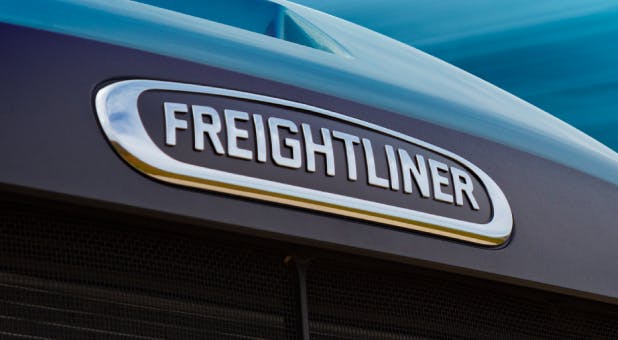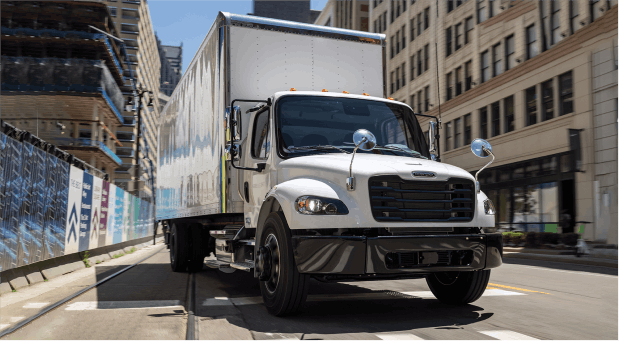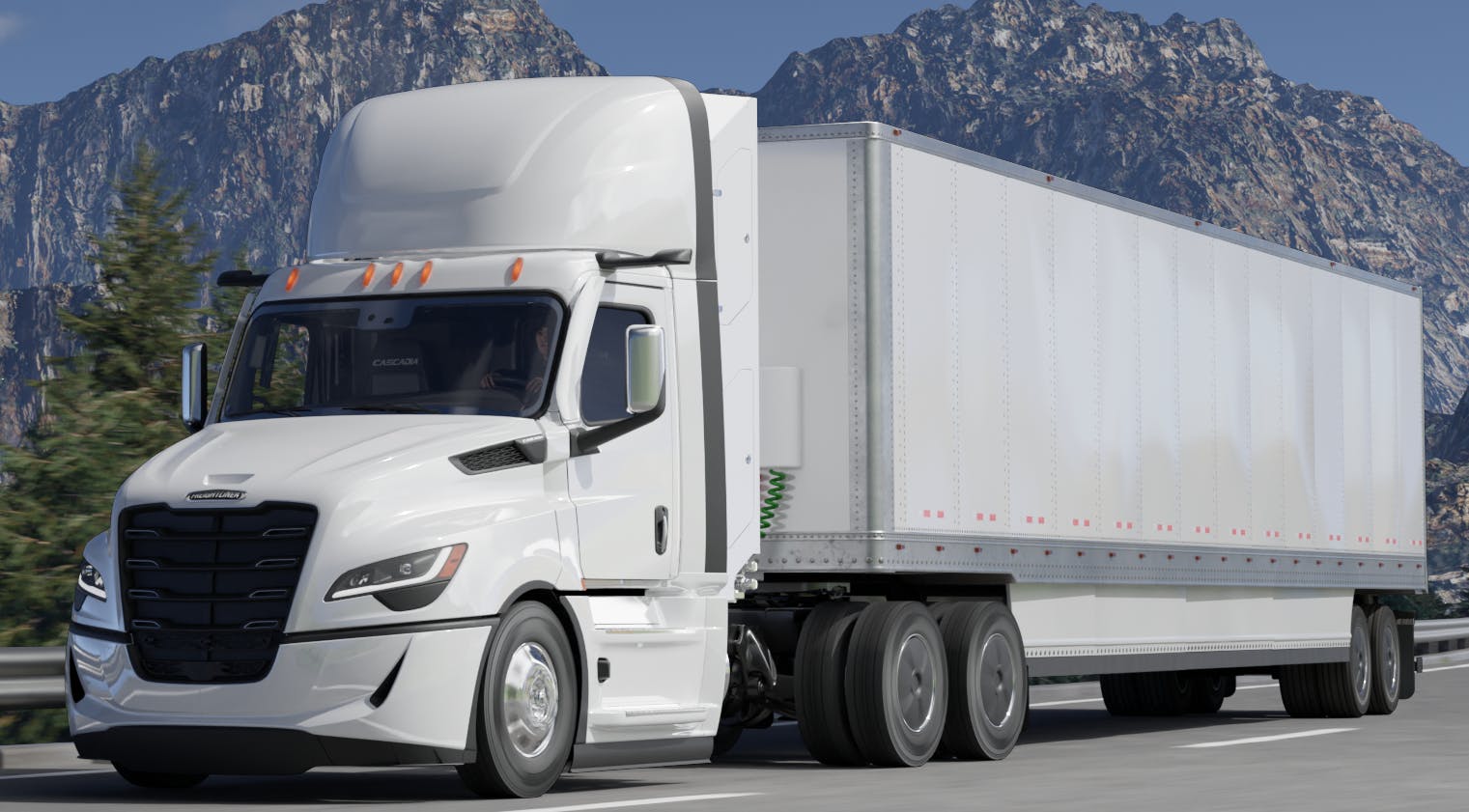How to Get the Semi-Truck Fuel Economy You Were Promised
Freightliner Trucks Fuel Efficiency
Throughout 2014 the price of diesel fuel has been on a steady decline. This is good news for drivers and their wallets. Owner-operators that have been able to combine the low prices with fuel efficiency best practices have been able to realize increased net profits this year.
Fuel is one of the biggest variable expenses for any owner-operator. That means fuel economy is critical to the success of their business. Here are a few tips to help your semi-truck get the fuel economy that your dealership promised you.
Focus on aerodynamics
Besides having an efficient engine, reducing aerodynamic drag is one of the best ways to reduce your fuel costs. Freightliner Team Run Smart Pro Henry Albert is known for tweaking the aerodynamic components on his truck in order to consistently reach 10+ MPG. Some of the features that Albert has added to his truck are the following:
- Special windshield for better airflow
- Body-integrated antenna
- Hubcaps at all wheel locations
- Cab extenders with filler piece between the side skirts and the extender body
- Lower front air dam
- Hood-to-bumper filler piece
- Elliptical-shaped mirrors
- Chassis side-fairing enhancements
- ATDynamics TrailerTail
- Wide-base single tires
Aerodynamics is most important when you are driving at speeds in excess of 50 MPH. Every 2% reduction in your aerodynamic drag will result in a 1% increase in fuel economy.
Slow down
For a lot of drivers speed is one of the biggest contributing factors for poor fuel efficiency. They fall behind schedule and feel that they need to crank up the speed in order to reach the drop location by their deadline. For each 1 MPH you drive over 55 MPH you will see a 0.1 decrease in your MPG.
Tires are important, too
Tire rolling resistance is a big contributing factor to your trucks fuel efficiency. By using tires that have the lowest rolling resistance possible you will be able to exert more energy towards powering the truck itself, which will increase your MPG.
A lot of fleets are starting to move to wide based tires instead of conventional dual rib tires. Testing has shown that this can help increase your MPG by as much as 4%.
When you put new tires on your truck it takes them approximately 35,000 to 50,000 miles before they are properly broken in. That is when you really begin to hit your tire’s sweet spot. Worn tires can give you up to a 7% increase in fuel economy.
Having properly inflated tires is also extremely important. Not only will it help to prevent possible blowouts, but for every 10 psi that your tires are underinflated you will see a 1% reduction in your fuel economy.
Reduce your idling time
It’s understandable that as a driver you will need to idle your truck for periods of time. The key is to keep this to a minimum. The more your engine is running without being in motion, the worse your MPG is going to be. For each hour that you sit idling, you are losing 1% in fuel efficiency.
Being able to achieve the fuel economy that you were promised by the dealership shouldn’t be that hard to do. You need to make sure you’re reducing aerodynamic drag and you need to make sure you are operating your truck in a way so that you are burning the least amount of fuel possible.









